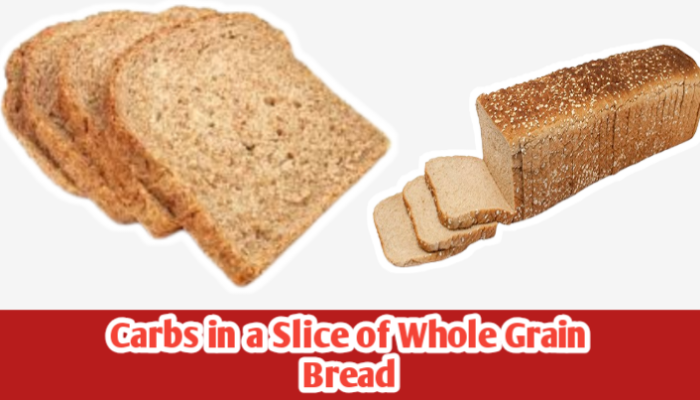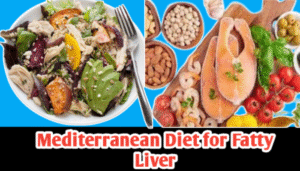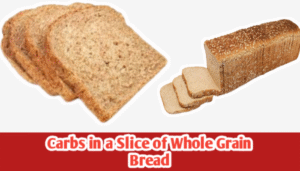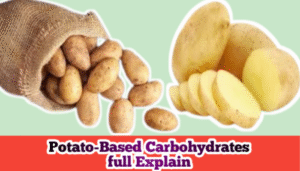Carbs in a Slice of Whole Grain Bread is made using all parts of the grain kernel, including the bran, germ, and endosperm. Unlike refined white bread, it retains fiber, vitamins, minerals, and protein, making it a nutrient-dense source of carbohydrates. Carbs in whole grain bread are essential for energy production, digestion, and overall health, especially for active individuals and those seeking a balanced diet.
1. What Are Carbohydrates?
Carbohydrates (carbs) are one of the three macronutrients, alongside protein and fat. They are the body’s primary energy source, especially for the brain and muscles.
1.1 Simple vs Complex Carbohydrates
- Simple Carbs: Quick-digesting sugars found in fruits, honey, or white bread. They provide rapid energy but can spike blood sugar.
- Complex Carbs: Found in whole grains, oats, legumes, and vegetables. They digest slowly, providing sustained energy and stabilizing blood sugar.
1.2 Role of Carbs in Energy Production
- Carbs are broken down into glucose, which fuels cells and muscles.
- Excess glucose is stored as glycogen in the liver and muscles for later use, making them critical for endurance, exercise, and daily activity.
2. Carbohydrate Content in Whole Grain Bread
2.1 Average Carbs per Slice
- A typical slice of whole grain bread contains 12–20 grams of carbohydrates, depending on thickness and brand.
- Fiber accounts for 2–5 grams, with the remaining portion being starch and natural sugars.
2.2 Variations by Brand and Size
- Thicker slices have more carbs, up to 25 grams.
- Low-carb or specialty breads may contain 5–10 grams per slice.
- Reading the nutrition label is essential for accurate carb intake.
3. Types of Carbs in Whole Grain Bread
Whole grain bread contains a mix of carbohydrate types, which affect digestion, energy, and satiety:
3.1 Fiber Content
- Bran and germ in whole grains provide insoluble fiber, aiding digestion and gut health.
- Fiber slows glucose absorption, reducing blood sugar spikes.
3.2 Starch Content
- Starch is the primary energy-providing carb.
- Slowly digested starch in whole grain bread provides long-lasting energy, ideal for breakfast or pre-workout meals.
3.3 Natural Sugars
- Whole grain bread may contain small amounts of natural sugars from grains.
- Unlike refined sugar, these sugars digest slowly and are less likely to spike blood sugar.
4. Glycemic Index (GI) of Whole Grain Bread
4.1 Comparison with White Bread
- Whole grain bread has a lower GI (50–65) compared to white bread (70–75).
- Lower GI means slower digestion, resulting in stable blood sugar and longer satiety.
4.2 Effect on Blood Sugar Levels
- Whole grain carbs reduce insulin spikes and support weight management and diabetes control.
- Ideal for those seeking sustained energy for work, exercise, or daily activities.
5. Health Benefits of Carbs in Whole Grain Bread
5.1 Energy for Daily Activities
- Carbs in whole grain bread provide steady energy for work, study, and exercise.
5.2 Digestive Health and Fiber
- Insoluble fiber promotes regular bowel movements and a healthy gut microbiome.
5.3 Weight Management
- High fiber content increases satiety, reducing overeating and supporting weight control.
5.4 Heart Health
- Whole grains help lower cholesterol levels and reduce cardiovascular risk.
5.5 Blood Sugar Control
- Slower-digesting carbs prevent rapid blood sugar spikes, beneficial for diabetes management.
6. Incorporating Whole Grain Bread in a Balanced Diet
6.1 Portion Sizes and Timing
- One or two slices per meal is sufficient for most adults.
- Best consumed during breakfast or pre-workout for energy.
6.2 Meal Pairing Ideas
- Pair with protein sources like eggs, Greek yogurt, or peanut butter.
- Add healthy fats like avocado or olive oil for improved nutrient absorption.
6.3 Tips for Carb Loading and Fitness
- Ideal for athletes: Combine whole grain bread with fruits and honey for pre-event carb loading.
- Supports glycogen replenishment after endurance workouts.
7. Potential Considerations and Common Myths
7.1 Are Carbs “Bad”?
- Not all carbs are bad; complex carbs like whole grain bread are nutrient-dense and beneficial.
- Avoid refined carbs like white bread and pastries for better health outcomes.
7.2 Gluten Concerns
- Whole grain bread contains gluten, which is safe for most people.
- Those with celiac disease or gluten sensitivity should choose gluten-free whole grain alternatives.
7.3 Overconsumption Risks
- Eating excessive bread without balancing protein, fat, and fiber may lead to calorie surplus.
- Moderation and portion control are key.
8. Conclusion
Carbs in a Slice of Whole Grain Bread is a nutrient-dense carbohydrate source that provides energy, fiber, and essential nutrients. Its complex carbs, lower glycemic index, and high fiber make it ideal for daily meals, fitness, and overall health. Pairing whole grain bread with protein and healthy fats, it becomes a balanced, sustainable, and versatile carb option for everyone, from casual eaters to athletes.










